It is very unpleasant when your favorite indoor flower starts to hurt. Consider the likely causes of what is happening, identify the pathogens and learn how to deal with them. So, what diseases of indoor plants are there, what drugs are there to eliminate them, and can flowers fully recover after treatment?
Content
The main factors in the development of diseases
- Watch for soil acidity and nutrient availability. An insufficient amount of them leads to slow growth, leaves fall off, flowers become defective.
- Low or high room temperatures will cause the leaves to curl.
- Incorrect lighting. The stems become thin, the leaves dry out, the flowers do not develop.
- Water the flowerpot properly. Excess moisture contributes to the development of rot on the roots, and a lack of moisture contributes to yellowing of the leaves.
Please note that some pest control substances are dangerous not only for humans, but also for pets. Consider this and carry out treatment measures in the fresh air and store toxic substances away from children and animals.
Let us consider in more detail the types of diseases and measures to combat it.
Viral diseases
The main feature of this type of indoor plant disease is growth retardation, however, it should be noted that the plant rarely dies. This fact does not allow identifying viruses at the onset of the disease and starting the fight against the pest in time.
The most common viruses are aphids and thrips. The treatment of indoor plants is cardinal - complete destruction, because there are no drugs for their treatment. External signs of the disease are the appearance of mosaic spots on flowers and some leaves.
Bacterial diseases
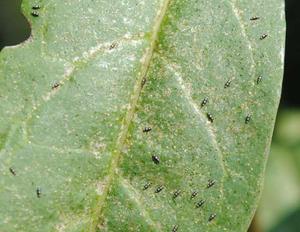 1. Rot. Plants with fleshy stems and leaves are especially affected by decay. Excess moisture and nitrogenous fertilizers contribute to the development of the disease. Most often cyclamens, saintpaulias and sansevierias are subject to decay.
1. Rot. Plants with fleshy stems and leaves are especially affected by decay. Excess moisture and nitrogenous fertilizers contribute to the development of the disease. Most often cyclamens, saintpaulias and sansevierias are subject to decay.- 2. Withering. With this disease, the stems first wither, and then the whole plant. On the cut of the shoot of such a plant, there is no brown ring, which is a distinctive feature in case of fungal infection.
- 3. Spotting. It is manifested by the presence of dead areas of the leaf. The spots have clear boundaries, in contrast to the fungal spot.
- 4. Bacterial cancer. The disease manifests itself in the form of growths similar to tumors on the roots and shoots. Their spreading through the plant leads to its death. Most often, the disease affects begonias, Kalanchoe, succulent spurge.
Chemicals are not effective against bacterial infections. The main thing - take preventive measures, monitor soil moisture. When root decay appears, it is necessary to reduce the abundance of watering, and if the entire houseplant is damaged, it is necessary to completely destroy it together with the earth and the pot.
Houseplants susceptible to attack by many pests, such as:
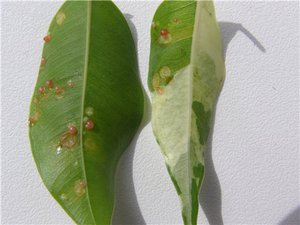 Cyclamen mite almost does not differ from the usual, only smaller. The main symptoms of this pest are: wilting of flowers, twisting of plant stems, curling up the edges of the leaves, growth stops.The accumulation of pests on the underside of the leaf resembles dust in appearance. Balsams, Saintpaulias, cyclamens most often suffer from ticks. To combat, regularly treat the plant with insecticides and tear off the leaves affected by the disease.
Cyclamen mite almost does not differ from the usual, only smaller. The main symptoms of this pest are: wilting of flowers, twisting of plant stems, curling up the edges of the leaves, growth stops.The accumulation of pests on the underside of the leaf resembles dust in appearance. Balsams, Saintpaulias, cyclamens most often suffer from ticks. To combat, regularly treat the plant with insecticides and tear off the leaves affected by the disease.- Shield is an immobile plaque under which the female is and breeds offspring. If there is an extensive pest colony, the plant must be destroyed by burning. Young scale insects can be removed with a cotton swab dipped in alcohol.
- Mushroom gnats... Adult pests fly around the plant, and insect larvae cause danger. They mainly feed on the organic content of the soil, but it happens that they also affect the root system of plants. Pests appear mainly at high soil moisture. To fight insects, use the preparation "Mukhoed", do not water the plant for up to 5 days.
- Mealybug is an insect similar to wood lice and feeds on the sap of leaves, which leads to their deformation and drying out. Their secretions attract ants and provoke the formation of molds. For small areas of the lesion, use a cotton swab dipped in soapy water. Also, in the fight against the pest, you can use an infusion of tobacco, garlic or an alcohol solution of calendula, which can be purchased at the pharmacy. Their chemicals will help to cope with the problem "Metaphos" or "Aktelik". Mealybug mainly affects geranium, azalea, lemon, palm, asparagus, fuchsia, fern and other plants.
- Whitefly resembles a small white moth. Whitefly eggs can be seen as small gray grains. As a result of their life, a sooty fungus forms on the leaves of plants. White spots form on the affected leaf, it turns yellow and falls off. The most dangerous thing about the whitefly is that it very quickly produces offspring and carries viral diseases. Fuchsia, pelergonia, begonia, jasmine, hibiscus and other indoor plants suffer from it. It is difficult to defeat a pest. Destroy eggs and larvae regularly, and catch adults with fly sticks. Prepare a 1% green soap solution and apply it to the bottom of the leaves once every few days. Perform up to 5 treatment cycles. From the folk methods of pest control, an infusion of garlic is recommended. If the result is negative, use a solution of nicotine sulfate or parathion.
- Aphid - small greenish insects that feed on plant sap and like to live on the tops of green shoots and on flowers. Aphid secretion attracts ants and provokes fungal infections. Spray the plant with a permethrin-based insecticide or use derris. Re-process the indoor flower after a few days.
- Spider mite often settles on the inside of the leaf of plants, while forming yellow spots. Over time, the leaf falls off, and cobwebs may appear on the stem and leaves. To destroy the pest, derris must be applied to the plant several times.
Diseases caused by fungi
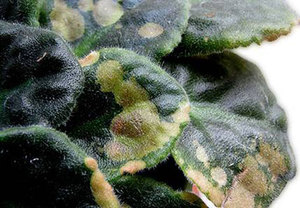 Alternaria and dry spotting. The causative agent of the disease is a fungus from the genus Alternaria. It is characterized by the appearance of concentric brown spots, first on the lower sheets, and then on the upper ones. High humidity and temperature in the room contribute to the development of the disease. The main methods of combating the disease are fungicides: abiga, vitaros, hom.
Alternaria and dry spotting. The causative agent of the disease is a fungus from the genus Alternaria. It is characterized by the appearance of concentric brown spots, first on the lower sheets, and then on the upper ones. High humidity and temperature in the room contribute to the development of the disease. The main methods of combating the disease are fungicides: abiga, vitaros, hom.- Anthracnose manifests itself in the formation of dark spots on the leaves of palm and ficus trees. Most often it infects plants in greenhouses, but indoor flowers such as cyclamen, calla, azalea can also be affected by the disease. The affected leaves must be removed, the plant must not be watered and treated with Fundazole.
- Ascochitis. Ascochitis of chrysanthemums is the most difficult. The onset of the disease manifests itself in the appearance of reddish or brown spots of various shapes. Over time it grows and becomes darker with a border around the edge.The disease is spread by wind, water and contaminated soil. The treatment is the same as for anthracnose.
- Eden occurs when there is a lack of lighting and high soil moisture. It mainly affects succulents. It is characterized by the formation of greenish bumps on the leaf, which can change their color to brown. In this case, the leaf itself does not die off. The treatment is simple and consists in loosening the soil and adjusting the irrigation regime.
- Septoriosis appears as gray or brown spots with a yellow frame, which eventually turn black in the center. The spores of the fungus are able to survive the winter and begin reproducing again in the spring. For treatment, take 1 ml of vitaros and dilute in 500 ml of water. Treat the plant and repeat the process after 7 days.
- Gray rot mainly affects the stems, but over time also affects the flowers and leaves. Rot at the beginning of its spread looks like a grayish bloom, later it affects the stem and tissue necrosis forms inside, as a result of which the movement of water stops and the plant dies. For treatment, prepare a paste of trichodermine, and spray the flowers with a solution of phytosporin.
- Tracheomycosis is a disease in which the vessels of plants are affected. Mushrooms close the lumen with mycelium and nutrients cannot freely flow to the plant, it begins to die. There are such types of tracheomycosis:
- Verticellosis
- Fusarium.
- Malsecco citrus
- The disease responds poorly to treatment, since it is detected only when the vessel is completely damaged. Orchid, rose, ficus, orchid, petunia and others are especially susceptible to disease. Treatment is necessary in the initial stages. For this, the plant is treated with foundation, vectra, topsin - m.
Prevention
In order not to waste time and money on the treatment of indoor plants, take preventive measures:
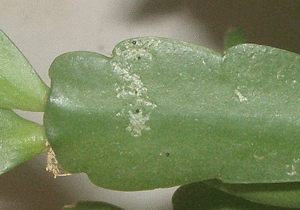 Purchase indoor plants from specialty stores or nurseries.
Purchase indoor plants from specialty stores or nurseries.- Choose disease resistant flower varieties.
- Seeds for planting must be sorted and disinfected without fail.
- Each type of indoor flowers requires its own care conditions, keep them.
- Examine leaves and flowers regularly for diseases.
- If a plant damage is detected, urgently isolate it and begin measures to combat the disease.
It is worth noting that it is better and easier to prevent the spread of pests than to treat indoor plants.
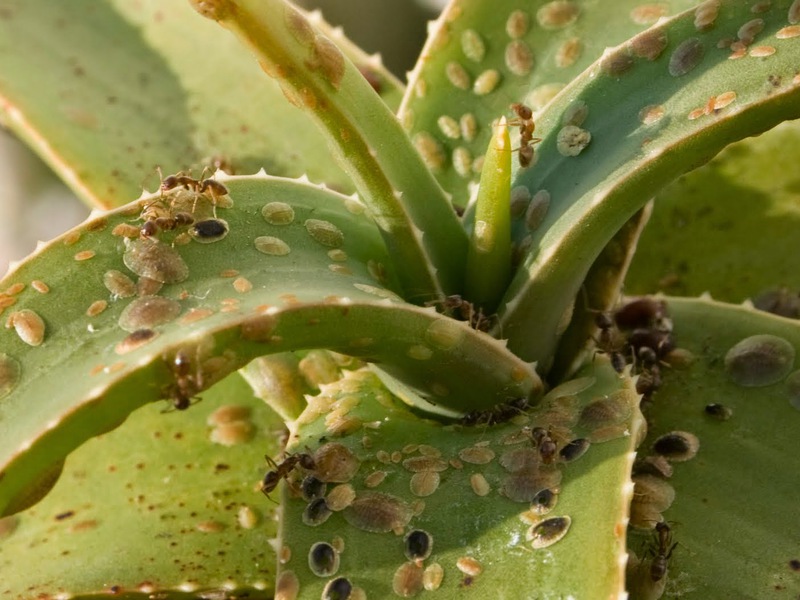

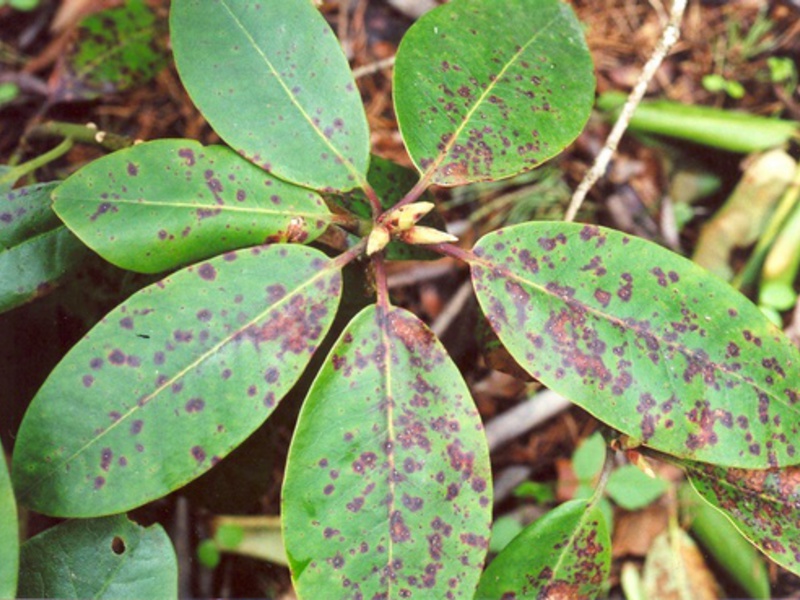
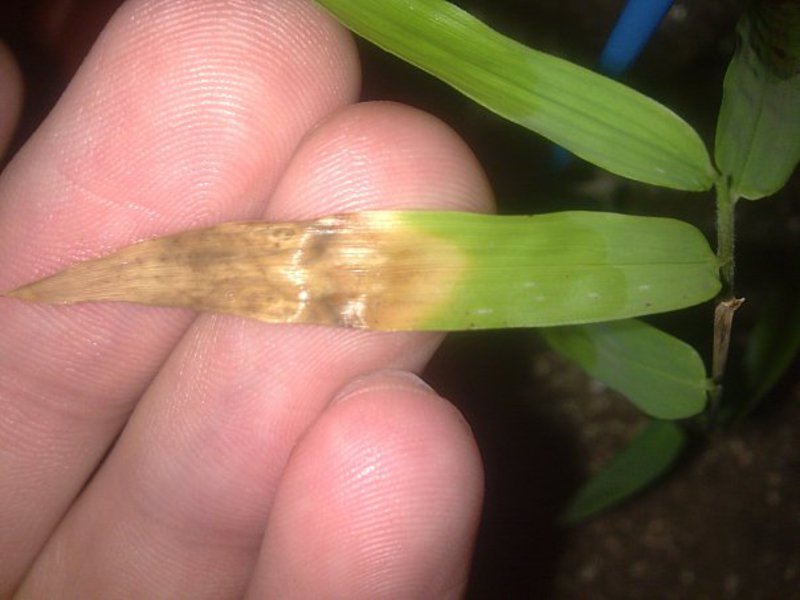

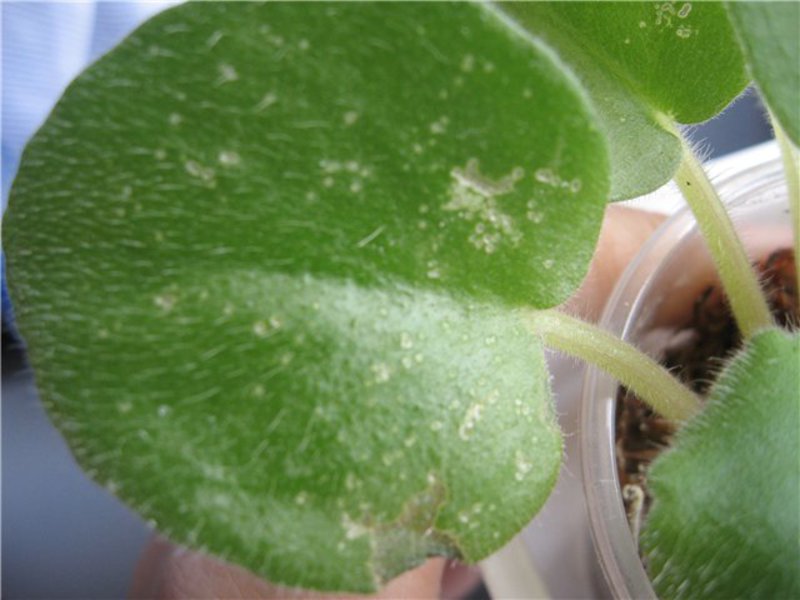
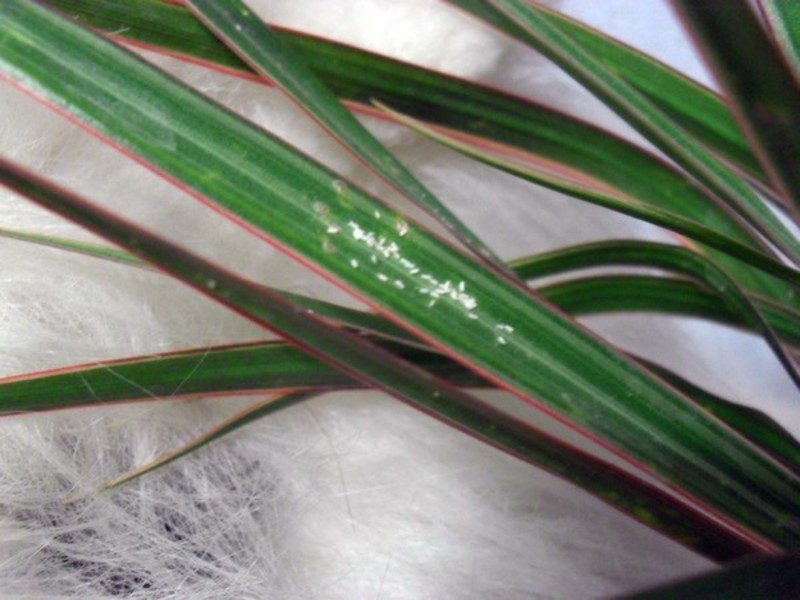
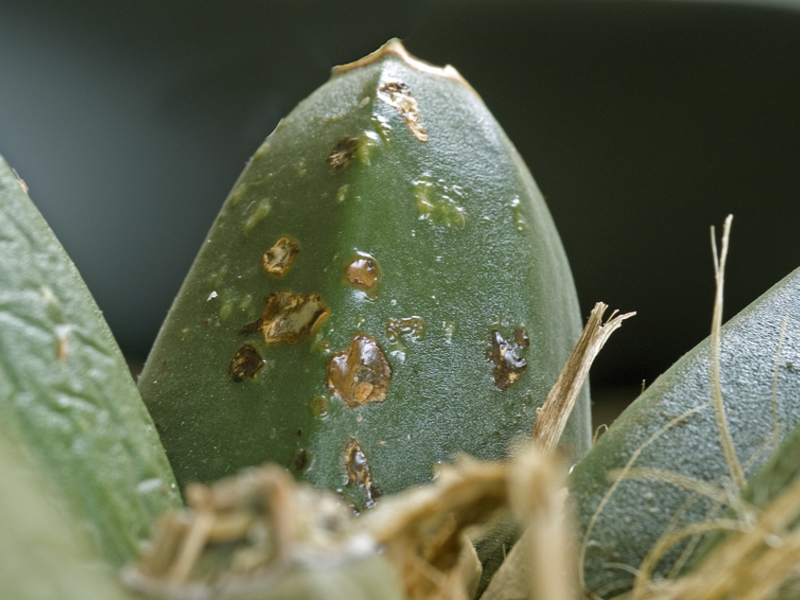
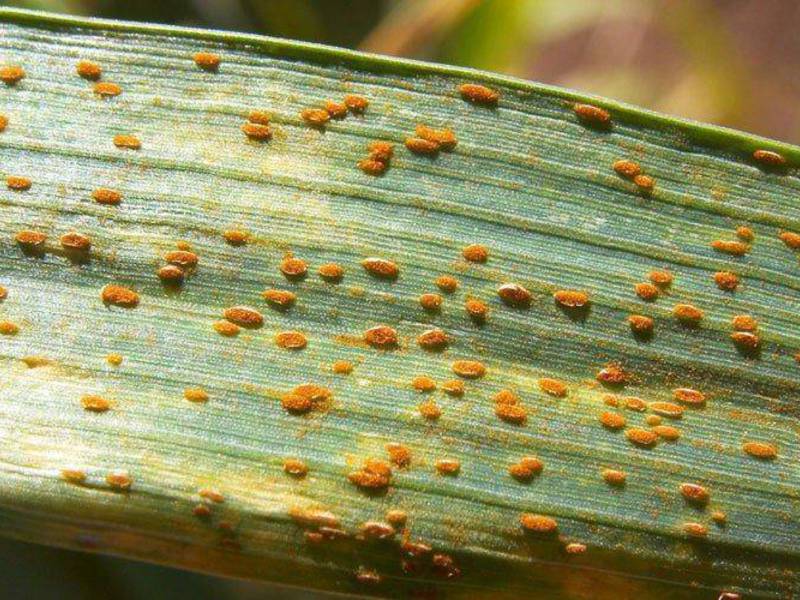
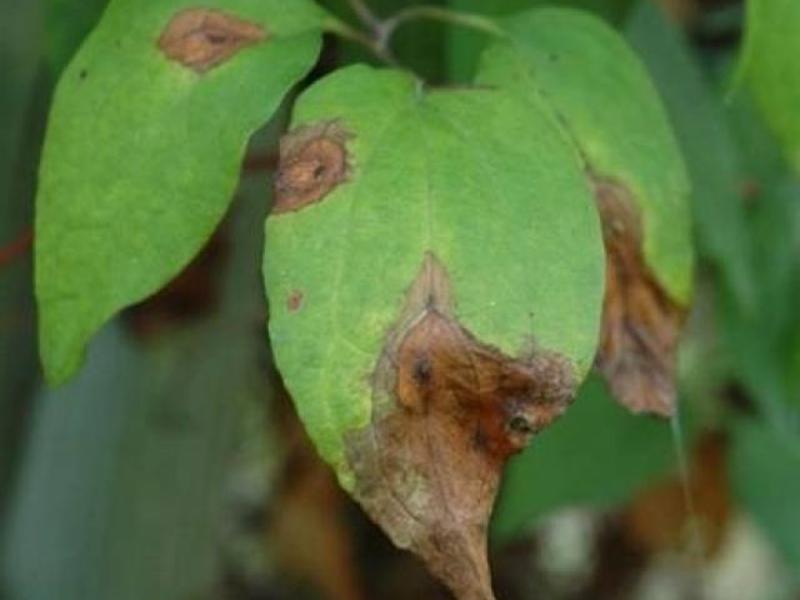

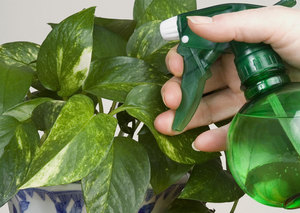

1 comment